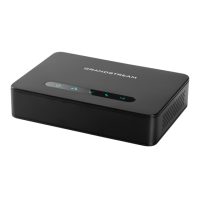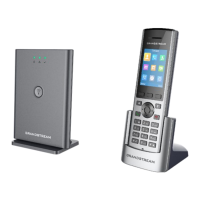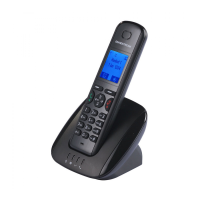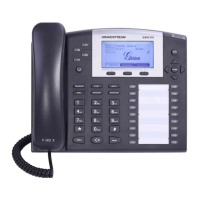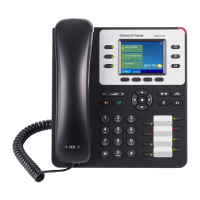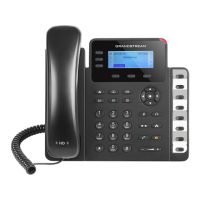P a g e | 45
WP810 Administration Guide
Version 1.0.7.83
Account /Feature Codes
Enable Local Call
Features
When enabled, Do Not Disturb, Call Forwarding and other call features can
be used via the local feature codes on the phone. Otherwise, the provisioned
feature codes from the server will be used. User configured feature codes
will be used only if server provisioned feature codes are not provided. And
once feature codes are configured, either via server provisioning or local
setting, a Softkey named “Features” will show on the LCD screen.
Note: If the device is registered with Broadsoft account, it doesn’t matter if
local call features are enabled or disabled, once the Broadsoft account is set,
special feature to Broadsoft and Feature Key Synchronization is enabled, the
call feature will be handled by Broadsoft server, not by the phone.
Account Swap
Swap configurations between two accounts
Settings Page Definitions
Settings/General Settings
Defines local RTP port used to listen and transmit RTP packets.
This parameter defines the range of local RTP port from 48 to 10000.
Forces the phone to use random ports for both SIP and RTP messages. This
is usually necessary when multiple phones are behind the same full cone NAT.
The default setting is “No”.
Note: This parameter must be set to “No” for Direct IP Calling to work.
Specifies how often the phone will send a Binding Request packet to the SIP
server in order to keep the “ping hole” on the NAT router to open. The valid
range is from 10 to 160. The default setting is 20 seconds.
Configures the IP address for the Contact header and Connection Information
in the SIP/SDP message. It should ONLY be used if it is required by your ITSP.
The default setting is keeping the box blank.
The IP address or Domain name of the STUN server. Only non-symmetric NAT
routers work with STUN.
Configures specific time that the account will be registered after booting up.
Only Allow password with some constraints to ensure better security.
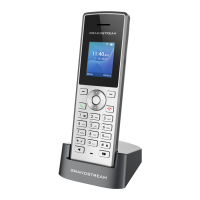
